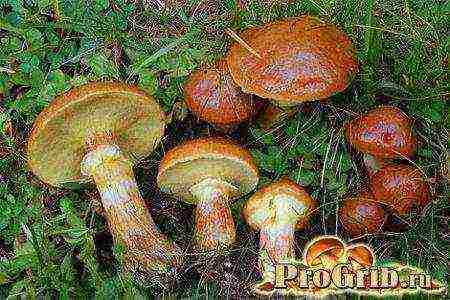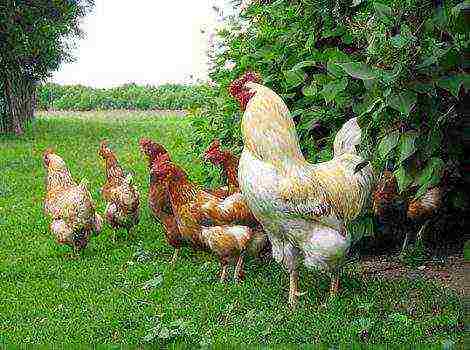Content
If you feel that your dish lacks some piquant note, add a little fresh or dried marjoram to it and the food will immediately be filled with aroma.
Fragrant greens have become very popular in our area and now many in their dachas and vegetable gardens grow marjoram, growing from seeds is the easiest way to get a crop of a plant. Here you will learn how to plant marjoram correctly, how to care for it, and even if you do not have your own plot, you can easily grow greens in an apartment on a windowsill.
Marjoram - planting and care in the open field
First, let's look at how to plant a plant outdoors. For cultivation, it is better to use the garden type of marjoram, it is less capricious and has the best taste.
Despite the fact that the plant is perennial, in artificial conditions it is bred as an annual because of the too long growing season.
Soil preparation
It is better to plant marjoram on open ground in May, when the cold weather has already receded and warm sunny weather has established. In warm southern regions, this period may come earlier. The plant does not tolerate cold weather, therefore it is very important to comply with the climate conditions.
Light, slightly acidic or neutral soils are suitable for greenery. At the end of winter, the soil must be fertilized with organic matter and minerals. A month before planting, the earth is dug up and moistened, all this time it must maintain moisture and remain loose.
The site should be chosen sunny, without drafts, sloping terrain, even, but not depressions, is suitable.
Approximately a couple of weeks before sowing, fertilizers are added to the soil: superphosphate, urea, potassium salt (20-30 g per m²) and dug up again.
Sowing marjoram
Greens are grown from seeds that can be bought in appropriate stores, but in our climate they should not be sown directly into open ground. It is unlikely that they will ascend safely. Along with the preparation of the soil, seedlings of plants are also prepared in greenhouse conditions.

You will need regular wooden boxes, and flower pots will do.
You can buy ready-made soil or prepare it yourself in this way:
- humus - 2 parts;
- leaf land - part 1
- sand - 1 part;
- perlite - 1 part.
The seeds must be sorted out and the smallest and most damaged ones must be removed. The rest before sowing must be soaked in a weak solution of potassium permanganate for 3-4 hours. This will protect them from harmful microorganisms.
Then the liquid is drained, and the seeds are dried a little. For sowing convenience, it is recommended to mix them with a small amount of sand.
The container needs to be filled with soil by 2/3. The seeds are not buried deep, and they are sown on the surface of the soil not too densely. Sprinkle the soil on top, its thickness should be 2-3 cm. The soil should be moistened, but not more than 60%.
The boxes with seedlings are removed to a warm place (+ 20-25 ° C) and watered regularly. The first shoots can be observed after 10-15 days.
When the seedlings germinate to the first pair of leaves, the seedlings are ready for diving - transfer to open ground.
Planting marjoram in the beds
The finished seedlings are transferred to the beds, placing them in a tape manner. The distance between them should be at least 20 cm. Marjoram bushes grow sweeping, lush, they should not crush each other.
Several ribbons of plants can be planted on a wide bed, but a distance of 20-30 cm must be maintained between each seedling. Immediately after transplanting, the soil is slightly moistened.

Marjoram seedlings care
To get a rich harvest of greens, it is important not to allow the soil to dry out, it should always keep the moisture content at 50-60%.
About a couple of weeks after picking the seedlings into the beds, they need to be fed with fertilizers (ammonium nitrate, potassium, phosphorus). When the bushes germinate and get stronger, the watering can be reduced a little.
For marjoram, weeding from weeds and loosening the soil is very important. Weeds should not be allowed to sprout nearby, they can strangle the marjoram. When the leaves are juicy enough, they can be torn off and used as a fresh seasoning. For drying and storage, the grass is harvested later.
Collecting marjoram
The plant is ready to harvest when flowering has begun. This usually happens in August. If you want to get more juicy leaves, then the peduncles should be cut off immediately after they appear. But the flowers themselves are also an excellent addition to teas and infusions, so you can pick them later, along with herbs.
The twigs are cut with a sharp knife at a distance of about 10 cm from the ground.
To dry the greens for the winter, they are laid out in a thin layer on a flat surface and placed in a warm, shaded, well-ventilated place.
After the leaves turn yellow and become brittle, they are crushed and transferred to an airtight package. In this form, dried marjoram can be stored for a year.
Growing marjoram outdoors is not suitable for those who live in very cold regions, where even in summer there is a lot of rain and wind. In this case, planting should be done in a greenhouse.
In a completely covered greenhouse, inside which the temperature is constantly maintained at not lower than + 20 ° C, you can plant seeds directly in the beds. Just remember to soak them in manganese beforehand.
Marjoram: growing from seeds at home
You can also grow fragrant spicy greens in flower pots right in the apartment. The seasonal period does not really matter here, but biological cycles are laid down in each plant at the genetic level, so planting is still better done in the spring, so it is more likely that all the seeds will sprout.

Prepare pots, soil, and seeds. All this you can easily find in flower shops, and inexpensively. It is advisable to lay a layer of small stones at the bottom of the pots, you can easily collect them on the street. Planting and care is not much different from the above process, except that the seedlings are not transferred to the beds.
Soak the seeds in potassium permanganate, add 2/3 humus to the pots. Once the seeds are ready, mix them with sand and sow lightly over the topsoil. Sprinkle the seeds with earth on top, water and cover the pots with a bag, making several holes in it.
Place the containers in a warm place for a couple of weeks. Water the ground every day. After 2-2.5 weeks, sprouts should appear. As it happened, immediately remove the bags, and move the pots to sunny windowsills. During this period, feed the marjoram with fertilizer.
After about a month, when the shoots have grown, watering can be reduced. The soil should be weeded from time to time so that it always remains loose.
Greens are edible from the moment they sprout. For drying and storage, the crop is harvested after flowering begins.
And the flowers will be easy to get seeds for new seedlings. After about 3-4 weeks of flowering, bolls form in place of the flowers, if they are gently shaken, then seeds will sprinkle from there.
It's so easy and simple to plant marjoram on the windowsill, cultivation does not require much trouble, the main thing is to water and loosen the plant on time.

You can propagate the grass with bushes.To do this, a ripe large bush is dug out by the root, divided into several small ones and planted in a new place. Marjoram is very fond of the sun, if you place it in an apartment where there is little natural light, provide the plant with artificial lighting for at least 6 hours a day.
A fragrant and very healthy marjoram, growing from seeds of which is not a difficult process, will make your cuisine more varied and spicy. The plant is widely used in folk medicine, it contains many useful substances.
They say that if you hang a sprig of marjoram above your front door, evil will never enter your house.
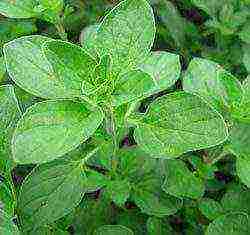 Aficionados of Mediterranean cuisine often grow the seasonings they need right in their garden. One of them is marjoram, a close relative, but not a copy of oregano. The cultivation of this culture in the open ground of the middle lane is quite successful, subject to the rules of planting and care. The proposed article describes the varieties of marjoram, agricultural techniques for its cultivation, options for use as an ornamental plant.
Aficionados of Mediterranean cuisine often grow the seasonings they need right in their garden. One of them is marjoram, a close relative, but not a copy of oregano. The cultivation of this culture in the open ground of the middle lane is quite successful, subject to the rules of planting and care. The proposed article describes the varieties of marjoram, agricultural techniques for its cultivation, options for use as an ornamental plant.
Description of the crop: application, varieties and varieties
This fragrant herb is native to the Middle East and is called "peerless" in Arabic. But you can still compare it: with oregano, cardamom, thyme and other spices that are ideal for Italian cuisine. It is believed that the composition of marjoram contains an as yet unidentified aromatic substance, due to which the fragrance of this seasoning is thinner and sweeter than that of its related herbs. Two types of marjoram have penetrated into the culture:
- leafy garden - a dense perennial shrub, has a more pronounced aroma, due to which it is desirable in dishes in combination with other hot-spicy herbs;
- floral - a low-growing annual, propagated only by seeds, is often cultivated for the sake of obtaining essential oils and as a medicinal plant.
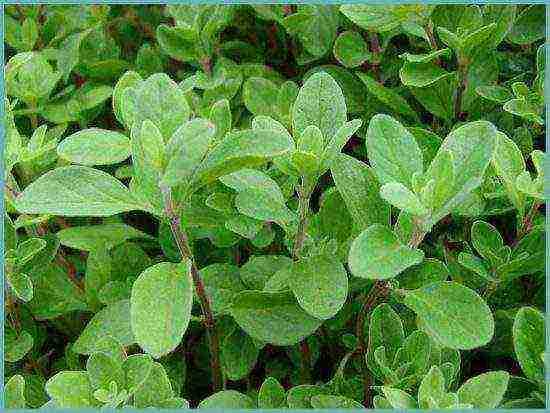
Marjoram is widely used as a condiment in Mediterranean cuisine
Both types are unusually rich in vitamins, contain an optimal combination of rutin and ascorbic acid. In Europe, they have been cultivated since the days of Ancient Rome. Marjoram leaves were not only put in various dishes, but used to prepare love potions, added to wine for newlyweds, and scented the musty air of medieval houses with them.
Recently, several successful varieties of this crop have been bred, which are pleasant to grow in the middle lane:
- Baikal - bright, large, with a rich aroma, is considered the best variety for culinary purposes;
- Gourmand - a low-growing variety for fresh use, easy to care for and quite harvestable;
- Tushinsky Semko - is distinguished by pointed leaves with small denticles along the edge; with good care, within 3 months after germination, it gives a sales sheet;
- Cretan is a decorative rather than culinary variety, characterized by large drooping flowers and a lemon flavor, thanks to which it is often added to tea.
Timely planting of a plant is the key to a spicy harvest
The main difficulty in growing marjoram is its exceptional thermophilicity. This delicate grass does not tolerate the slightest frost at all, therefore, in the middle lane, the gardener is forced to tinker with the seedlings in the spring, starting work at the end of March.
Marjoram seeds are extremely small and take about three weeks to germinate, so they are planted to a depth from which they can successfully emerge. This is about 1-1.5 cm. From a greater depth, only a part of the seeds will sprout, with a smaller part of the seedlings it risks drying out.
Advice. Mix marjoram seeds with calcined river sand and you don't have to worry about planting evenly.
Seedling containers are placed in a greenhouse or on a brightly lit windowsill, they provide proper care: they monitor the temperature, which should not fall below 23 degrees, watering is done from a sprayer.
At the age of a couple of true leaves, marjoram dives.When the seedlings take in, they are fed with a complex mineral fertilizer. Marjoram is planted in open ground at the age of 6-7 leaves, but not before the risk of frost has passed.
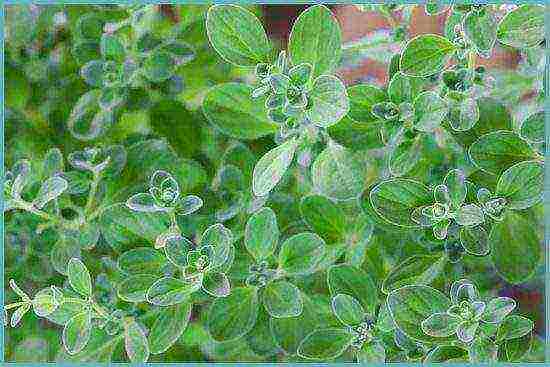
Culture loves sunshine
What care does marjoram require
To obtain fresh spicy greens, one must not forget about the plant's needs for fertilizer, water, heat and sun. In the open field, humidity, temperature and illumination are constantly changing, so the gardener needs to:
- plant a plant in an open place, on a southern or western slope;
- regularly organize watering with lukewarm water, especially in the first weeks after planting;
- loosen to avoid the formation of a crust on the soil;
- feed periodically;
- weed out the weeds.
Attention! To obtain fragrant leaves, marjoram flower stalks should be cut off. However, it is recommended to keep some of the plantings in bloom, which will make it an excellent addition to herbal tea.
Fertilizing and feeding marjoram
Competent care of this crop requires timely nutritious feeding. The following nutrient regimen is recommended:
- in the fall, a little rotted manure and phosphorus are introduced under the digging of the site;
- in the spring, after the final rooting of seedlings in the open field, they are fed with nitrogen;
- in the summer, once every two to three weeks, watering is combined with complex fertilization.
The key point of marjoram cultivation is plant propagation
Marjoram easily reproduces by self-seeding. In the fall, fruiting bushes are left in the beds or flower beds, and they themselves scatter their seeds. In the spring, plants are dug in, divided into parts and planted on bald patches. But this method is possible only in the southern regions, since in the middle lane and to the north, marjoram simply does not overwinter in the open field.
The temperate climate forces the grower to propagate the plant in seedlings, buying seeds or collecting them from a few bushes left to bloom. To get your own marjoram seeds, you need to roll a wide bag out of paper, substitute it under the fruit-boxes and gently shake the latter.
Attention! Marjoram seeds remain viable for no more than one year, so it is pointless to harvest them for future use.
What diseases and pests affect marjoram
This delicate herb knows how to defend itself from uninvited guests with the help of its aromatic substances, which are not to the taste of many insects. However, there are also fans of its smell, an example of which is the marjoram moth. It is not recommended to spray plantings against it, so it is better to use special traps, glue or pheromone.
Of the fungal diseases on marjoram, you can often find Alternaria, which manifests itself in the form of dark spots of irregular shape on the leaves. Periodic inspection of the plantings allows you to find diseased specimens and remove them. As a preventive measure, the intensity of watering should be reduced, which provokes the spread of harmful fungi.
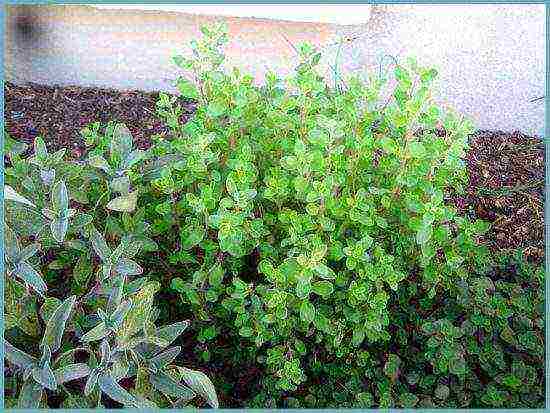
Marjoram bush
Combination of marjoram with other plants
Take a look at the photo: with proper care, marjoram grows into beautiful emerald curtains, against which large single flowers or shrubs look great: peonies, hydrangeas, junipers. In the garden, it is better to plant it near the cabbage, since its aroma drives away the cabbage whitewash. But cucumbers do not like the presence of this fragrant neighbor.
It is not difficult to grow marjoram - it is demanding only for heat. Add this cute plant to your garden collection, and you have not only nice-looking greens, but also a very tasty and healthy seasoning for your everyday kitchen.
How to plant marjoram: video
Growing marjoram: photo
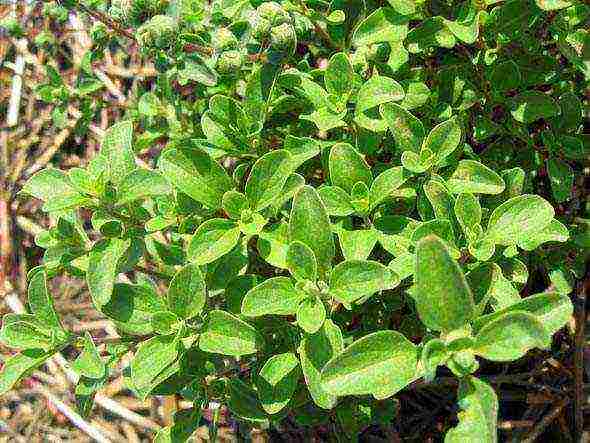
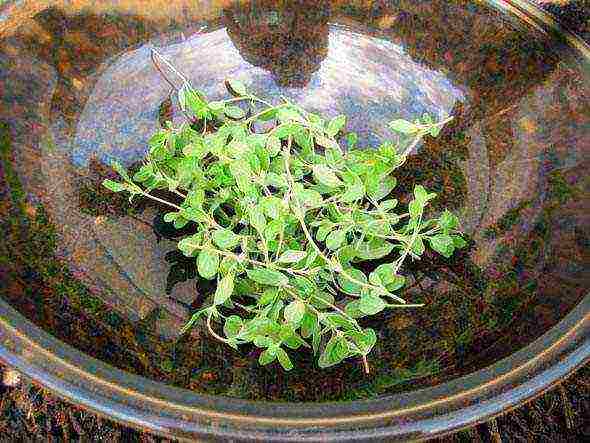
Marjoram is an ideal spice for growing on a windowsill. Indeed, in the conditions of our winters, marjoram freezes out in the garden, and it has to be sown every spring.In conditions of stable temperatures in our apartments, you can grow marjoram from seeds in a pot.
How to grow marjoram from seeds
- Choose a pot up to two liters, with good moisture removal and a thick layer of drainage. For the roots, a depth of 20 cm is sufficient.
- The seeds can be pickled before sowing with a manganese solution for a couple of hours. You need to sow no deeper than a centimeter, moisten the soil and cover with foil until the first shoots.
- Seeds germinate quickly in warmth, young shoots need a constant temperature of 20 to 25 degrees.
- Lowering the temperature for marjoram is not scary, so it can even spend the winter on an insulated balcony if the temperature does not drop below 10 degrees.
- Watering as the earth dries up + irrigation. If there is little light in the marjoram, its leaves will turn pale, but in principle, the lack of light will not kill it.
- You need to cut the marjoram after a month and a half so that it bush well.
- Be sure to feed the marjoram with mineral fertilizer.
Growing marjoram from seeds at home is an interesting topic for those who want to plant a plant and get a bountiful harvest soon. Spices are actively used both in cooking and in medicine. Housewives love to talk about their beneficial properties. Before starting the study of agricultural techniques, it is worth considering why marjoram is so useful.
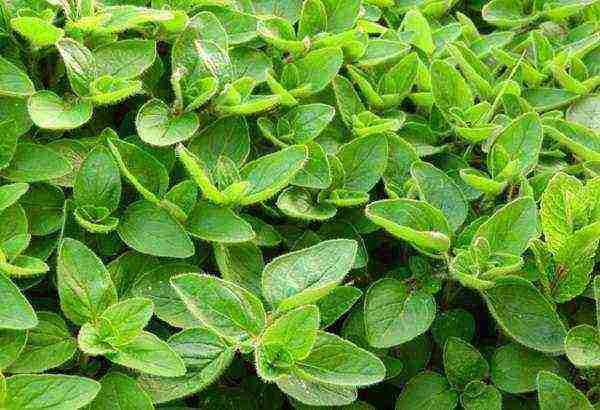
In the photo, marjoram greens
Marjoram: useful properties and contraindications
The plant is often used to make liqueurs, vinegar, condiments, puddings, tea, and even sausages. And this list is far from complete. Such popularity of the spicy culture is due to the presence of useful substances in it, which have a beneficial effect on human health.
It is worth noting that marjoram:
- Improves digestion.
- It has a sedative and diuretic effect.
- Indicated for those who adhere to a diet.
- Facilitates the process of expectoration in case of lung diseases.
- Accelerates blood circulation.
- Helps with insomnia.
- Relieves inflammation of the bladder.
- Has a wound healing effect.
As for contraindications, allergy sufferers need to be careful. Doctors do not recommend overuse of marjoram spices for pregnant women. It is even better not to use essential oils based on it for children who are not yet 5 years old.
Marjoram on the windowsill: growing from seed
You can get fragrant spicy herbs even if you do not have a vegetable garden. The culture is grown, as a rule, by seedlings. If you immediately plant seeds in open ground, then they may not germinate, especially when it comes to regions with an unfavorable climate.
The seeds can be planted directly in a regular flower pot by placing it on a windowsill. Soil, container and planting material are most often purchased in a specialized store. A layer of pebbles is carefully laid out on the bottom of the pot. First, the seeds must be soaked in a solution of potassium permanganate.
What to do next? Pay attention to the basic steps:
- Humus is poured into the container.
- Then the seeds are mixed directly with sand, planted on the surface layer of the soil.
- Sprinkle them a little with soil on top.
- Drizzle over the planted marjoram.
- Cover the container with a bag and make a few holes in it.
- Then move the pot to a warm place for about 3 weeks.
- When you notice the first shoots, remove the plastic wrap and place the container on a lighted windowsill.
- It will not be superfluous to feed the marjoram with fertilizer during this period of growth.
- As the plant grows, the watering can be made less intense.
It is important to remember that greens are good for food immediately after they have sprung up. However, drying should be started only after the marjoram begins to bloom.
- Cilantro: growing from seed outdoors
Growing marjoram from seeds, video:
Of course, growing marjoram from seeds at home requires from a connoisseur of healthy greens some knowledge of agricultural techniques and planting. To make your work easier, we decided to share very useful information, videos and tips that have already helped thousands of gardeners achieve success in growing a spicy crop.
(
estimates, average:
out of 5)
